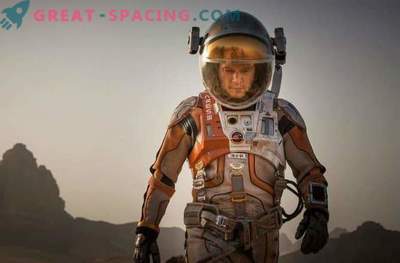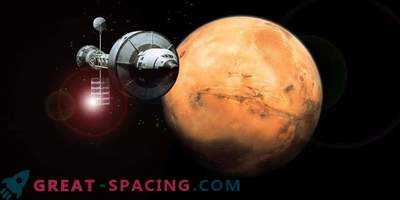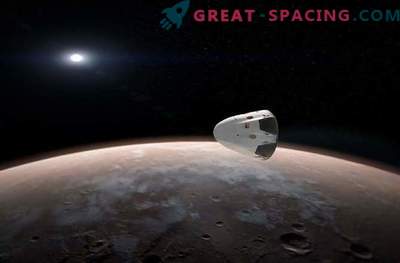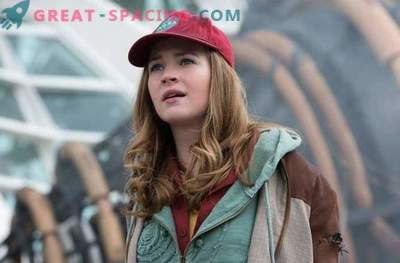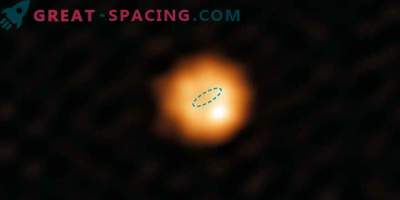
It is difficult to survive in space, and scientists say that the “Martian” shows quite closely what challenges the pioneer astronauts will face when they decide to go to Mars, even if from the very beginning of the film it contains some large deviations from the truth.
An example is the great storm that forced the team to throw on the Red Planet the wounded main character of the film, botanist Mark Watney, played by Matt Damon.
“The very first shots of the film are incorrect,” said Mars expert Scott Hubbard, professor and consultant at the department of aeronautics and astronautics at Stanford University.
Because of the thin atmosphere on Mars, the force of the wind can reach only half the force of the wind of a hurricane, and “probably the astronaut simply will not feel it, not to mention that it cannot inflict such damage as shown in the film.”
However, Hubbard and other scientists say they became fans of the novel written by Andy Weir, and the film directed by Ridley Scott, because they describe all the potential threats the crew of the Mars expedition to Mars planned for 2030 year.
With the approval of NASA, the film presents a multinational crew flying to the Red Planet. Damon's character, who has a monthly supply of food, is accidentally left to the mercy of fate. Doomed to a four-year wait, when the ship flies back to Mars, he constantly thinks that he may die, and looks for ways to avoid death, dancing disco and giving himself a promise to survive at any cost.
“The best thing about this film is that it teaches how to think one, two, three steps forward,” says NASA astronaut Rex Walheim.
In the film, which will be released on screens in the USA on October 2, he finds himself in a difficult situation and trying to stay alive, the astronaut manages to grow a crop of potatoes, which he eats while eating energy bars and vitamins.
When a gluttonous person wakes up after the ketchup of the hero, he leans on the painkiller - Vicodin, with which the potato is seasoned.
Once Damon assigns himself the title of the best, though, the only botanist of the planet.
But the fact that he cultivated hundreds of potato tubers in “his own feces”, according to Bruce Bagby, the head of the plant growing, soil and climate department at the University of Utah, is the author’s fantasy.
“The beds are never watered with untreated sewage,” says Bagby, noting that you must first destroy all the harmful microorganisms contained in the waste.
Bagby also assures that Earth scientists have found a way to grow plants in adverse conditions, as well as to release oxygen from carbon dioxide and water. It is necessary to make an experiment by simulating on Earth a long-term expedition to Mars, for which people are placed in an enclosed space devoid of external oxygen or water, and check whether it is possible to grow food and process waste in such conditions.
This was not achieved during the experiment called “Biosphere 2”, conducted in the USA in the 1990s.
A one-year experiment is being conducted in Hawaii, funded by NASA, which models life on Mars, but its focus is primarily on the psychological side of the expedition, rather than on building a self-sustaining food chain.
“Theoretically, we know how to organize everything, but it is still difficult to put this into practice,” said Bagby.
NASA astronaut Leroy Chao, who retired, says he takes off his hat to this film.
However, there are several “implausible and exaggerated” episodes in motion pictures, he noted.
In one of them, an astronaut breaks the gloves to control the engine of a spacecraft. In another episode, a crew member creates an improvised bomb that detonates only part of the ship.
“It's just not possible!” Says Chao.
In scenes where Damon communicates with the crew, he instantly reads the sent messages, although in fact it takes a few minutes to get a message on Mars. Also in the film there is no mention of dangerous cosmic radiation and the risk of getting cancer while the astronauts return to Earth.
Not to mention the fact that NASA is still developing a rocket design, on which a person can fly to Mars. The US space agency began testing the Orion Deep Space capsule, but its first manned test flight will take place no earlier than 2023.
“I think, in fact, even if all these technologies were already developed and tomorrow we could build Orion, we would not start it, because the human body is not yet ready to fly to Mars,” says Camille Allein, programs of the International Space Station.
But space policy expert, John Logsdon, said he believes this story is a source of inspiration for young people who will do everything to reach the Red Planet.
“I think that the red line of the book and the film suggests that this is worth pursuing,” he said.
